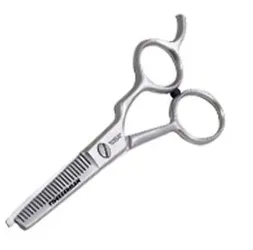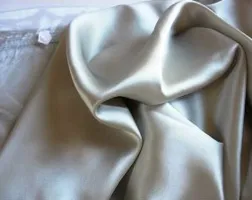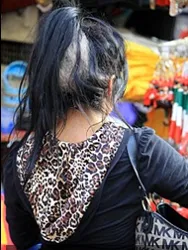
Tangled Hair: Preventing Them Before They Occur
Introduction
Tangled hair is a common challenge for most types, textures, lengths and styles of hair. It's true that naturally textured tresses (curly, kinky, wavy) as a general rule do tend to tangle more easily than others. The key to dealing with tangled hair is preventing it in the first place. The longer tangled hair is allowed to persist the harder it is to detangle. In some cases excessively tangled hair may pass a point where it can no longer be detangled without utilizing a pair of scissors. Obviously utilizing scissors to remove tangles is never the best option. Therefore, preventing hair from tangling to the point of no return is key. Listed below are some tips to prevent hair tangles before they become critical: 1. Keep hair detangled on a daily basis. Problems occur when hair is not regularly detangled. While it's best to utilize hair friendly detangling methods such as using a 100% boar bristle brush or a smooth wide tooth comb, whatever method works best for your hair should be utilized. 2. Utilize a variety of conditioners. If your hair is naturally dry or damaged, consider utilizing a pre-shampoo conditioner to keep tangles at bay during the cleansing process. You may wish to consider combining a pre-shampoo conditioner with a rinse-out and/or leave-in conditioner. Scheduling regular deep conditioning treatments is also a great way to keep tresses well moisturized and less likely to tangle. If your hair is excessively dry you may also wish to experiment with applying a rich jojoba oil to the ends or trouble spots or applying a professional conditioner in-between shampoo sessions.
3. Consider
Whether you opt for a pre-shampoo conditioner or not, make sure to use lots of conditioner while you're in the shower. If your hair is extremely prone to tangling you may wish to do a Conditioning Only (CO) cleanse rather than utilizing straight shampoo. Another moisturizing option besides utilizing conditioner as your cleanser is to dilute your shampoo or wash with water only. A good dilution formula for your shampoo would be 1/4 to 1/2 teaspoon of shampoo to 1 quart of lukewarm water. Adjust the dilution formula according to the amount, length and thickness of your hair. 4. Detangle in the shower After rinsing out your desired shampoo formula, but before your final rinse, slather on a good rinse out conditioner. While a natural conditioner is always best, select a product that is designed to address your hair type and texture. Detangle hair by starting at the bottom of the strands and combing through it. One of the most hair friendly detangling tools you can utilize is your own fingers, especially if they are smooth. You may was to experiment with applying conditioner to your hands and then using fingers to pick through knots and tangles. 5. Apply leave-in conditioner After your final rinse towel blot strands to remove excess moisture. If your ends tend to tangle easily, apply a cream style leave-in conditioner to the ends or other tangle problem areas. Avoid spray-in conditioners which can actually accelerate tangling after hair dries in some cases. In some cases products high in cone related ingredients may initially help with tangling but build up overtime causing worse tangling. If you notice your hair tangles more readily after extended use of some conditioners, consider switching to different brands or those with more friendly ingredients for controlling tangles. 6. Keep ends well trimmed
Historically tangles tend to start at the ends of the strands. Keep them well trimmed and make sure all visible split ends are instantly removed. Make sure you work with your professional hair stylist to minimize tangles by selecting cuts and styles which support a tangle free goal. 7. Know the tangle trouble zones For some people tangles tend to form at the back of the neck. For others it might the ends or the sides of the hair. If you know your hair is more prone to tangling at night, always detangle before you go to sleep and consider pulling hair into a soft sleep friendly braid. You may also find that sleeping on a satin or silk pillowcase will help. 8. Avoid tangle dangers There are several tangle dangers present in the hair world. These include. but are not limited to. applying chemical treatments to already dry or damaged hair, subjecting tresses to windy conditions without wearing protective headgear. Another common danger is not taking proper precautions to secure hair in known dangerous situations.
SummaryOne of the most common causes of developing stubborn or persistent tangles and knots is lack of regular brushing and detangling. When tangles are left untreated for an extended time the hair may lock together and be more difficult to treat without scissors. If you know your hair's general tangle dangers you can often avoid the formation of knots before they occur. The key to dealing with tangled tresses is to prevent them before they form. Social Media Network InformationPlease follow me on Twitter at: http://Twitter.com/HairBoutique. I look forward to meeting new Visit us at Hairboutique.com located at: http://www.HairBoutique.com, on Facebook, MySpace and YouTube. Thank you for visiting us at The HairBoutique Blog and for leaving your comments. They are very much appreciated. We apologize in advance but must remove any direct advertisements or solicitations. Original Publication Date: 08/20/08 - Revised Date: 04/20/11 | ||||||||||||
| If you want to talk more about this or other hair care articles on HairBoutique.com or anywhere else, please post a message on HairBoutique.com's Hair Talk Forums.
|
Social Media Network Information
Please follow us on Twitter at: https://Twitter.com/HairBoutique. I look forward to meeting new people from all walks of Twitter and learning from their Tweets.




















